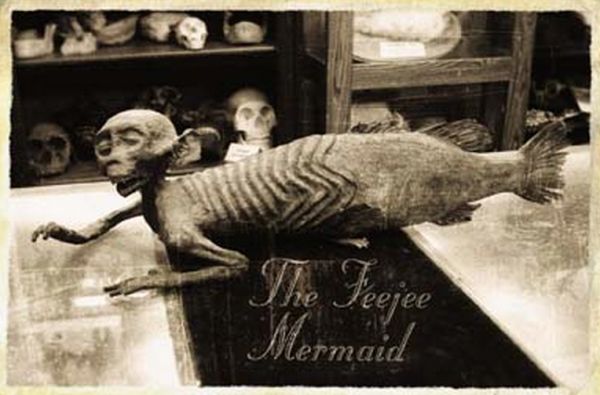The
freak show has been around for hundreds of years, but it reached new
heights under the reign of P.T. Barnum in the 19th century, whose
cobbled-together mummy called the “Feejee mermaid” made him a star.
Barnum
embarked on a ferocious campaign to convince his crowds that the
creature was real, feigning newspaper articles and even weaseling his
way into the American Museum of Natural History. He fabricated a story
about the mermaid’s discovery and distributed over 10,000 pamphlets. In a
matter of weeks, he had the public’s attention.
Barnum purchased
the American Museum on Broadway in New York and, throughout the 1840s,
introduced a “rotating roster of freaks: albinos, midgets, giants,
exotic animals” and anyone else who piqued the curiosities of the
public. To advertise the space, he hired the most unskilled musicians he
could find and had them play on the building’s balcony, in the hopes
that this “terrible noise” would attract customers.
Under his
leadership, the American freakshow became a booming business -- both
highly profitable and degrading for its performers.
The
death of the freak show came in the mid-20th century, as mass media
replaced live shows and the exploitive nature of the exhibitions turned
people off. There was a tug-of-war between those who said disabled
people shouldn’t be exploited and the performers who were making a good
living exhibiting themselves. But while the classic sideshow died out,
the original concept lives on in different forms.
The story of P.T. Barnum and the freakshow at Priceonomics also profiles the most famous “freaks” of yesteryear: General Tom
Thumb, Zip the Pinhead, Chang and Eng Bunker, Jo-Jo The Dog-Faced Boy,
and others.


No comments:
Post a Comment